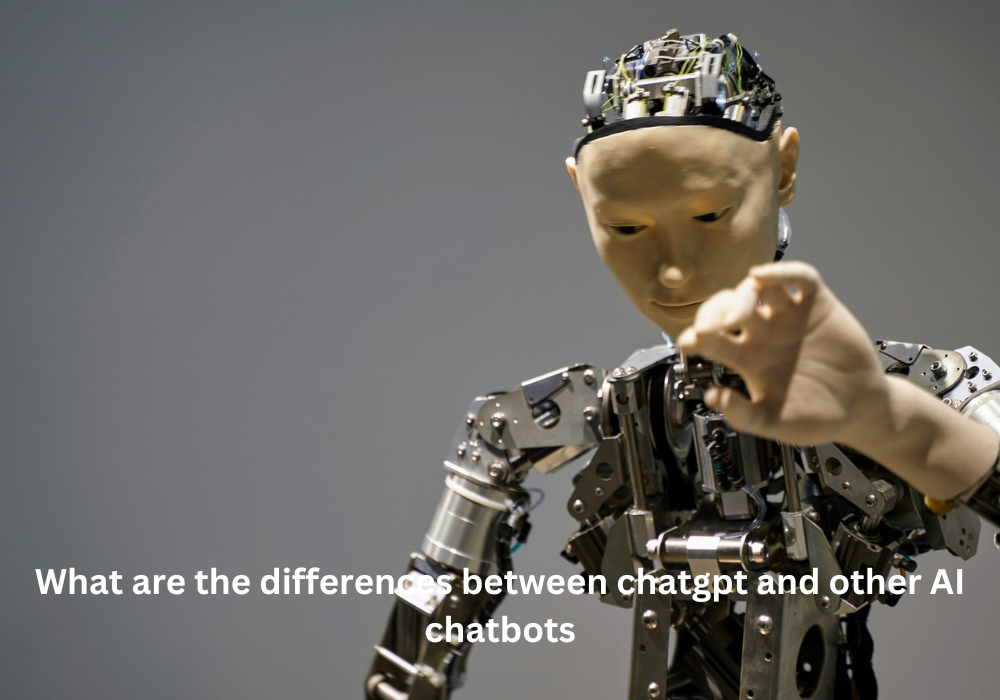The emergence of AI chatbots has revolutionized the way we interact with technology, providing a bridge between human-like conversation and artificial intelligence. Among these AI chatbots, ChatGPT has distinguished itself as a frontrunner. This article will explore the differences between ChatGPT and other AI chatbots, delving into aspects such as design, capabilities, and applications.
Background of AI Chatbots
Before diving into the specifics of ChatGPT, it’s essential to understand the landscape of AI chatbots. Initially, chatbots were simple rule-based systems that responded to specific commands or keywords. With advancements in AI, particularly in natural language processing (NLP) and machine learning (ML), chatbots have become increasingly sophisticated, capable of more natural and context-aware conversations.
Introduction to ChatGPT
GPT (Generative Pretrained Transformer) model is ChatGPT, created by OpenAI. Its goal is to produce language that resembles that of a person depending on the input it gets. This technology has been refined for a variety of uses, ranging from light chat to information exchange and task assistance.
Key Differences Between ChatGPT and Other AI Chatbots
- Technological Framework:
- ChatGPT: It’s based on the Transformer model, which allows it to generate highly coherent and contextually relevant responses. This model is pre-trained on a diverse range of internet text sources, giving it a broad understanding of language and context.
- Other Chatbots: Many rely on simpler NLP models and are often rule-based or use decision trees. While effective for specific tasks, they generally lack the depth and adaptability of Transformer-based models.
- Learning and Adaptability:
- ChatGPT: It uses unsupervised learning and can adapt its responses based on the input it receives. This adaptability makes it more dynamic in conversation.
- Other Chatbots: They often require more structured and supervised learning approaches. Their adaptability is usually limited to their training data and predefined rules.
- Contextual Understanding:
- ChatGPT: It excels in understanding context and maintaining coherence over longer conversations. This is due to its ability to reference earlier parts of the conversation and adjust its responses accordingly.
- Other Chatbots: They often struggle with long-term context, usually responding well only to immediate queries.
- Versatility and Applications:
- ChatGPT: It is highly versatile, used in customer service, content creation, education, and even programming assistance. Its ability to understand and generate human-like text makes it suitable for a wide range of industries.
- Other Chatbots: They are typically designed for more specific applications, like answering FAQs in customer service or guiding users on a website.
- User Experience:
- ChatGPT: Known for providing a more engaging and human-like conversational experience. This enhances user satisfaction and makes interactions more natural.
- Other Chatbots: The experience can be more mechanical and less engaging, often leading to user frustration in complex scenarios.
- Customization and Scalability:
- ChatGPT: It offers significant customization, allowing developers to fine-tune it for specific tasks or industries. Its scalability is also a key advantage, able to handle a large number of queries simultaneously.
- Other Chatbots: Customization and scalability can vary, but many are not as flexible or scalable as ChatGPT.
- Ethical and Safety Considerations:
- ChatGPT: OpenAI has invested considerable effort in addressing ethical concerns, like misinformation and bias. However, these issues are an ongoing challenge in AI.
- Other Chatbots: The extent to which ethical considerations are addressed can vary significantly. Some may lack sophisticated mechanisms to handle sensitive topics.
Applications of ChatGPT
ChatGPT has found applications in diverse fields. In education, it assists in tutoring and creating educational content. In business, it’s used for customer support, reducing the workload on human agents. In creative industries, it aids in content creation, from writing assistance to idea generation. Its versatility also extends to technical fields, such as programming, where it can help in code generation and debugging.
Future Prospects
The future of AI chatbots, particularly ChatGPT, is promising. With ongoing advancements in AI, we can expect these chatbots to become even more sophisticated, with improved contextual understanding, reduced biases, and more personalized interactions. The integration of multimodal capabilities, like processing images and videos, will further expand their applications.
Conclusion
ChatGPT represents a significant leap in the evolution of AI chatbots. Its advanced NLP capabilities, adaptability, and versatility set it apart from other chatbots. While challenges remain, particularly in ethics and safety, the potential of ChatGPT and similar technologies to transform various sectors is undeniable.
bard ai unlimited free

